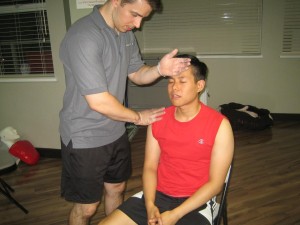Heatstroke is a severe condition due to overheating of the body. It is the most severe condition brought on by heat. Heatstroke is a consequence of prolonged physical exertion that increases the temperature of the body above 104 degrees F. This condition requires immediate treatment. If not properly treated, it can cause severe damage to the heart, brain, kidneys and the muscles.
Symptoms
- Severe headache
- Absence of sweating
- Dizziness and lightheadedness
- Reddened, warm and dry skin
- Muscle cramps and weakness
- Fast heartbeat which can be strong or weak
- Rapid and shallow breathing
- Seizures
- Nausea and vomiting
- Confusion, disorientation or staggering
- Unconsciousness
Treatment

- If the person has fever of 104 degrees F higher, medical care is required.
- Apply an ice pack in the armpits, groin, and neck and back which have abundant blood vessels that are close to the skin to cool down the body.
- Let the person sit under a cold shower or tub filled with cold water to cool down the body. If outdoor and a bathroom is not available, a pond, lake, stream or even a cold water from the hose can help in cooling down the temperature of the body.
- Rehydrate the body by drinking sports drinks for fast healing of the condition. If there are no sports drinks available, mix ¼ teaspoon of salt and a tablespoon of sugar for every quart of water. Mix well and let the person drink slowly ½ of the mixture every 15 minutes.
- Avoid energy drinks and soft drinks to prevent disruption of the ability of the body to regulate the temperature of the body.
Tips
- Drink plenty of fluids during warm days especially when performing strenuous physical activities to remain hydrated and prevent heatstroke. Drink at least a quart of water every hour.
- Avoid staying outdoors especially during the hottest times of the day. If there is a need to work outside, work early morning or late in the afternoon where the temperature is cool and lessens the risk for heatstroke.
- Wear loose fitting, lightweight and light-colored clothing to prevent the risk of heatstroke. Avoid dark colored clothes since they can heat up the body and increase the risk for a heatstroke.
- Apply sunscreen on any exposed skin to prevent sunburn.
Disclaimer / More Information
The material posted on this page on a heatstroke is for learning purposes only. Learn to recognize and manage heat-related conditions including heatstroke by taking a first aid and CPR class with one of our training providers.
